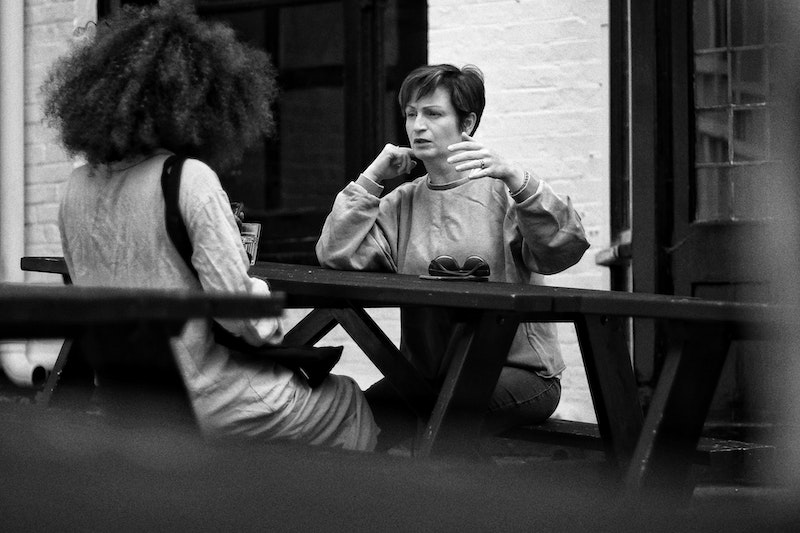Having a tough conversation is something most of us do our best to avoid. It’s emotional and stressful. Most of us are very uncomfortable with confrontation — or anything that we think feels like confrontation.
Sometimes, we see a difficult conversation coming. A supervisor knows they need to have a sit-down with an underperforming employee. Someone knows they need to address a colleague’s bad behavior.
But sometimes a difficult conversation leaps out at us unexpectedly. A routine conversation about a business project or a vacation request changes direction and we find ourselves in an uncomfortable position — heart racing and adrenaline pumping. Perhaps we find ourselves exploding (or shutting down) or, suddenly, someone is charging at us and we are caught with our guard down.
At Arden Coaching, one of our favorite books is Crucial Conversations, by Kerry Patterson, Joseph Grenny, Ron McMillan and Al Swizler. First published in 2002, the book offers great insights and approaches for having a difficult conversation to this day.
In a 2012 video, one of the book’s authors, Ron McMillan, talks about how good we actually are in communicating with each other in routine, non-crucial situations. However, when the conversation takes on certain characteristics, it becomes “crucial,” and we tend to run off the rails. So first, it’s essential to know the difference and recognize when you are entering — or find yourself in the middle of — a crucial conversation. You can’t use the tools if you don’t recognize the situation.
Wait, What’s Happening Here?
Let’s take the case of the conversation that has started unremarkably, but is becoming increasingly uncomfortable. You are getting a knot in your stomach and a “fight-or-flight” feeling. Are you in a crucial conversation? You should begin to use the tools of a crucial conversation if your can identify three things:
1. The stakes are high — at least for one of you
Crucial conversations are important. There’s a lot invested in the outcome by one or both of you. It may be about a new strategic direction for your company, a project recommendation being made by your team, or the behavior of an employee that is disrupting the productivity of your department. In all cases, the decision, the direction, and the sought-for change is important to the players.
2. There is a difference of opinion
This may seem obvious, but it is important to observe and recognize that you and the person you are speaking with do not see eye to eye. The stakes may be high, but if everyone is on the same page, the conversation tends to be routine (and much easier to have).
3. Emotions are strong
Crucial conversations are always about things we care about and outcomes we care about. The emotional element generates anger and lashing out, or shutting down and silently fuming, or sarcasm, or name-calling, or playing the victim, or… the list of behaviors that will sabotage a productive conversation and positive outcome goes on.
Now, understanding that you ARE in the midst of a crucial conversation, you can begin to deal with it. While you may begin to use the tools in your tool box immediately, it’s also perfectly acceptable to say, “Wait a moment, I am feeling caught by surprise and unprepared for this conversation. Can we reconnect in an hour to discuss this?” For more about having difficult conversations, read Arden Coaching’s “When’s the Best Time to Have a Difficult Conversation? Now,” and “Tough Conversations: What if You Assume the Other Person Is… Resilient?” By Arden Coach, Lilian Abrams.
To learn more about communication, having tough conversations, and improving leadership skills at your organization, contact Arden Coaching at info@ardencoaching.com or 646.684.3777.

